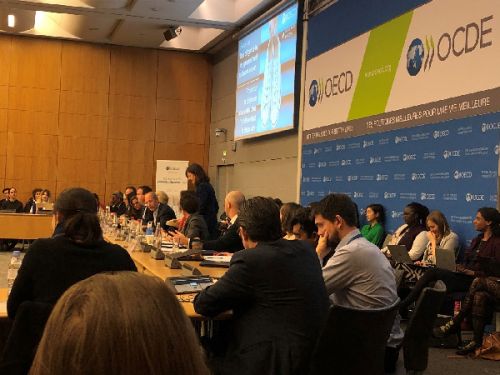OECD Workshop on Microfibers from Synthetic Textiles in the Environment
FEBRUARY 24, 2020 — Did you know that on average, garments are worn only 7 times before being disposed? Or that only 1% of textiles are recycled (garment to garment)?
In 2017, over 11 million tons of textiles were sent to landfills in the United States. Our clothing also sheds microfibers that make their way to our rivers, oceans, and even biota. Fiber shedding can occur as we wear clothing or during laundering.
On February 11-13, Carlie Herring, Research Analyst for the NOAA Marine Debris Program, learned this and much more while attending a workshop on microfibers from synthetic textiles. The workshop was held in the context of the Organisation for Economic Co-operation and Development (OECD) Forum on Due Diligence in the Garment and Footwear Sector. The goal of the workshop was to discuss technology and policy surrounding microfibers in textiles and ultimately deliver preliminary policy recommendations to mitigate and manage synthetic microfibers in the environment.
The workshop brought together environmental policy makers, scientists, industrial representatives, water and wastewater utilities, NGOs and civil society to discuss synthetic textiles and microplastics, specifically focusing on the following five topics:
- Microplastics: an overview of the latest science
- Preventing microfiber leakage: the role of product design and manufacturing
- Mitigating microfiber release during the use-phase of products
- Clean up: removal of microfibers from wastewater and biosolids through wastewater treatment
- Developing preliminary policy recommendations to tackle microfiber leakage
Outcomes and discussions from the workshop will inform an OECD report on mitigating secondary microplastics in marine and freshwater environments. The report, which will also feature case studies submitted by OECD countries, should be finalized by the end of the year.
For more information, contact Carlie.Herring@noaa.gov.
 An official website of the United States government.
An official website of the United States government.


